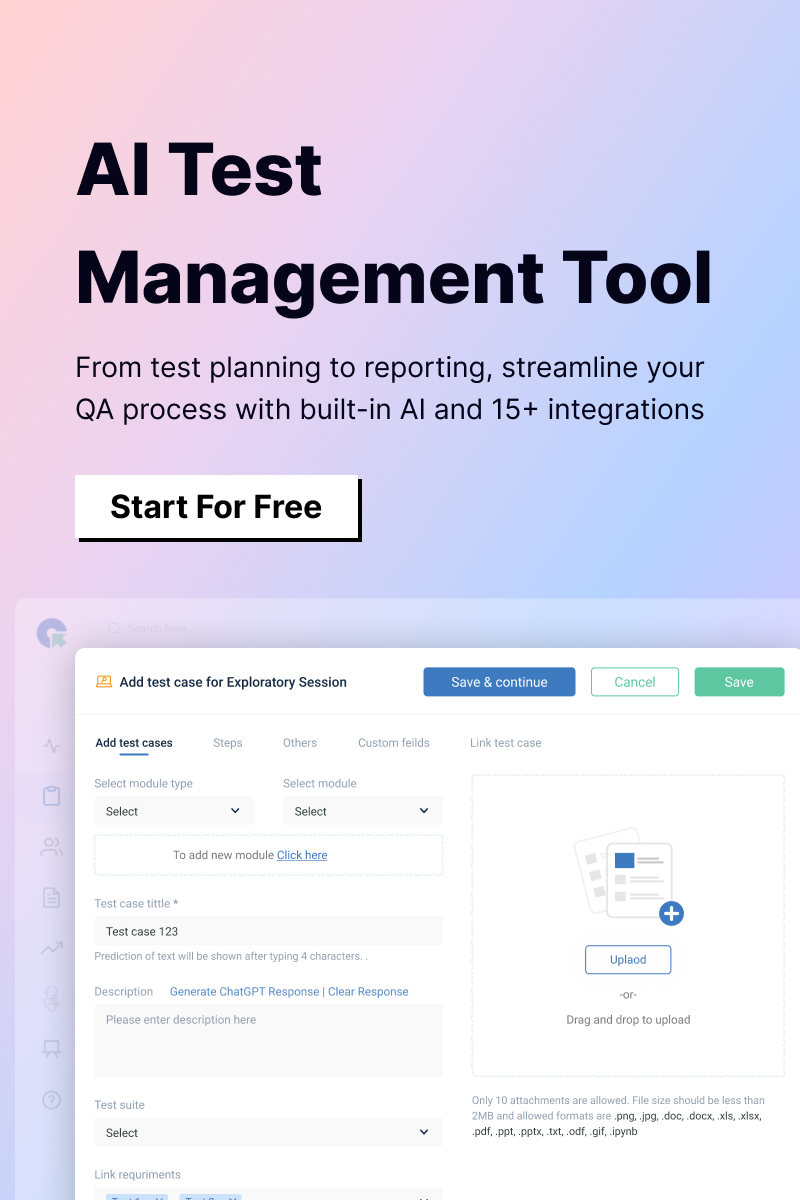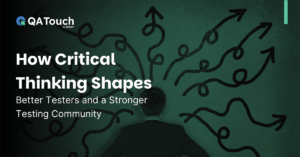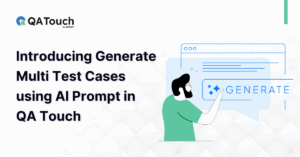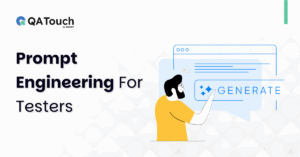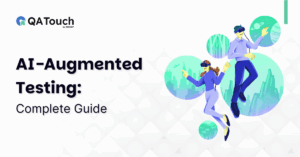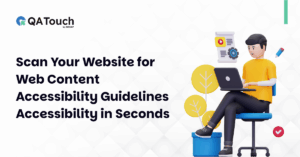Top AI Tools Every Software Tester Should Try in 2025
The world of software testing is evolving fast and AI is at the heart of that change. In 2025, QA testers have more powerful tools than ever to streamline their workflows, uncover issues earlier, and deliver higher-quality software at speed.
If you’re looking to stay ahead of the curve, this guide will walk you through the top AI tools every tester should try in 2025. We’ll explain how AI is reshaping testing, share selection tips, and highlight tools that can make a real difference in your day-to-day work.
Why AI Tools Are Essential for Testers in 2025
AI isn’t just a trend, it’s becoming a necessity for modern QA teams. Here’s why.
Rising Complexity of Applications
Applications are now more complex than ever, with multiple platforms, dynamic interfaces, and frequent updates. Traditional testing methods struggle to keep up with rapid changes, often requiring time-consuming manual updates and leading to flaky or outdated tests.
AI Helps Test Faster and Smarter
AI-powered tools automate repetitive tasks like test creation and maintenance, detect patterns, and predict potential defects. This allows testers to focus on more strategic work, improves test accuracy, and speeds up the testing process.
Staying Competitive in the Industry
Agile and DevOps practices demand faster releases without compromising quality. Testers using AI tools can meet these demands efficiently, making their teams more agile and competitive in the fast-paced software landscape.
Criteria for Selecting AI Tools for Testing
Choosing the right AI tool is crucial to maximize the benefits and ensure smooth adoption within your QA team. Here are the key criteria you should consider when evaluating AI-powered testing tools.
Ease of Integration
A top priority is how well the AI tool integrates with your existing testing environment. This includes compatibility with your current test frameworks, CI/CD pipelines, project management software, and collaboration platforms.
Tools that offer seamless integration reduce setup time and help maintain consistency across workflows. This minimizes disruptions and ensures that your testing processes continue without major changes or delays. If an AI tool requires extensive customization or standalone workflows, it may increase complexity and hinder adoption.
Use Case Fit
AI testing tools are designed to address different challenges, so it’s important to select one that matches your specific needs. For example, if your main pain point is maintaining UI automation tests, choose a tool with strong self-healing and UI validation capabilities. If you need to predict defects or analyze test coverage, look for tools with advanced analytics and predictive features.
Evaluate the core strengths of each tool and how well they align with your team’s priorities and project requirements. Selecting a tool that fits your use case will deliver the best ROI and improve testing efficiency.
Learning Curve and Support
Usability is critical for smooth adoption. An AI tool should have an intuitive interface that testers of varying skill levels can use effectively. Good documentation, tutorials, and training resources help reduce the learning curve.
Equally important is the availability of active support channels, including vendor support, community forums, and knowledge bases. Access to timely help and a strong user community ensures that your team can resolve issues quickly and continue to utilize the tool’s full potential.
Top AI Tools for Testers to Try in 2025

The market in 2025 offers a range of AI-powered testing tools designed to improve efficiency, accuracy, and insight throughout the software testing lifecycle. Below is a curated list of top tools every tester should consider, along with their key features and ideal use cases.
QA Touch
QA Touch is a modern test management platform designed to help QA teams plan, organize, and track their testing efforts efficiently. Beyond traditional test case management, QA Touch integrates AI-driven features that provide actionable insights, predictive analytics, and automated recommendations to enhance testing quality and coverage.
Key AI-powered features:
- QA Touch uses AI algorithms to analyze test execution data and defect trends, helping teams identify risk areas and bottlenecks in their testing workflows.
- By examining historical testing and defect patterns, QA Touch can forecast potential problem areas, enabling proactive risk mitigation before issues escalate.
- The AI engine suggests areas where additional testing might be required based on uncovered gaps or changing requirements, helping teams optimize their test suites.
- QA Touch tracks recurring defect patterns and predicts defect-prone modules, allowing testers to focus efforts strategically.
- QA Touch integrates with popular issue trackers, CI/CD tools, and automation frameworks to collect data that feeds its AI models, providing a unified view of quality.
Ideal use cases:
- Teams looking for a comprehensive test management solution enhanced with AI insights.
- Projects with complex testing requirements that need intelligent prioritization of test efforts.
- Organizations aiming to improve their test coverage and defect prediction without investing heavily in separate analytics tools.
- QA leads and managers seeking data-driven visibility into testing progress and quality trends.
Why testers should try it:
QA Touch stands out by combining test management with embedded AI intelligence, going beyond simple tracking to actively guide testing strategies. It helps testers and managers make informed decisions, prioritize testing where it matters most, and predict risks before they impact releases. This makes QA Touch a powerful ally for teams striving to deliver high-quality software efficiently while managing growing testing complexities.
Testim
Testim is an AI-powered platform designed for automated UI testing. It helps teams create, execute, and maintain automated tests efficiently, especially for web applications.
Key AI-powered features:
Testim’s standout feature is its self-healing technology, which detects changes in the UI and automatically updates tests to prevent failures. It also offers fast test authoring with AI-driven element recognition, allowing testers to build tests quickly. Additionally, it provides analytics to identify flaky tests and optimize test suites.
Ideal use cases:
Agile teams that need to maintain stable UI automation despite frequent UI updates will find Testim particularly useful. It’s ideal for projects where quick feedback and reliable regression testing are critical.
Why testers should try it:
By reducing test maintenance and improving stability, Testim helps teams deliver high-quality software faster and with less manual effort.
Mabl
Mabl is a cloud-native intelligent testing platform that supports automated functional and end-to-end testing with an emphasis on continuous integration and delivery.
Key AI-powered features:
Mabl provides auto-healing tests that adapt to application changes, cross-browser and device testing, and cloud execution that scales with your needs. It also offers detailed analytics and actionable insights to help teams quickly pinpoint and fix issues.
Ideal use cases:
Mabl is perfect for teams integrating testing into CI/CD pipelines, enabling continuous testing at scale without managing complex infrastructure.
Why testers should try it:
Mabl enhances test reliability and speeds up release cycles while providing deep visibility into test results and application health.
Functionize
Functionize is an AI-powered test automation tool that uses natural language processing (NLP) to simplify test creation and maintenance.
Key AI-powered features:
Testers can write test cases in plain English, which the AI translates into executable tests. The platform also features AI-driven maintenance that automatically updates tests as applications evolve, plus intelligent failure analysis for faster debugging.
Ideal use cases:
Teams with testers who have limited coding skills or who want to accelerate automation adoption without heavy scripting will benefit from Functionize.
Why testers should try it:
Functionize lowers the barrier to automation and reduces maintenance costs, helping teams quickly scale their testing efforts.
Applitools
Applitools is a visual testing platform that uses AI to automate UI validation across different browsers and devices.
Key AI-powered features:
Its Visual AI engine detects even the smallest UI differences and layout issues that are often missed by manual or traditional testing. It reduces false positives and supports cross-platform visual validation at scale.
Ideal use cases:
Frontend teams focused on ensuring pixel-perfect UI and consistent user experiences across devices will benefit from Applitools.
Why testers should try it:
Applitools helps catch visual regressions early, preventing UI issues from reaching end users and preserving brand integrity.
ReTest
ReTest is an AI-driven regression testing tool that automates test generation and maintenance based on system behavior.
Key AI-powered features:
It generates regression tests automatically by learning application behavior and identifies anomalies during test execution. It also prioritizes tests to focus on the most critical areas.
Ideal use cases:
Projects with frequent deployments needing efficient regression testing without manual overhead will find ReTest beneficial.
Why testers should try it:
ReTest reduces manual regression work and improves defect detection by focusing testing where it matters most.
Test.AI
Test.AI is an AI-driven testing platform that simulates human interactions and adapts dynamically to UI changes.
Key AI-powered features:
It mimics real user behavior during test execution and uses AI to recognize and adjust to UI element changes, reducing test failures caused by UI updates.
Ideal use cases:
Apps with complex, dynamic, or frequently changing interfaces benefit from Test.AI’s adaptive testing approach.
Why testers should try it:
Test.AI improves test resilience and reduces maintenance by continuously learning and adapting to application changes.
Virtuoso
Virtuoso is a codeless, AI-powered test automation platform designed to enable rapid test creation and execution.
Key AI-powered features:
It offers AI-assisted test creation without coding, intelligent suggestions for test coverage improvement, and seamless integration with existing tools and workflows.
Ideal use cases:
Testers and teams who want to quickly automate end-to-end testing without deep programming knowledge will find Virtuoso ideal.
Why testers should try it:
Virtuoso accelerates automation adoption and empowers more team members to contribute to automated testing efforts.
How to Get Started With AI Testing Tools
Adopting AI-powered testing tools can significantly boost your team’s efficiency and software quality. However, jumping straight into full-scale implementation can be overwhelming. To ensure success, it’s important to approach this transition thoughtfully. Here’s a practical guide to help you start experimenting with AI testing tools effectively.
Start With a Pilot Project
Begin by selecting a small, low-risk project to test the capabilities of AI tools. This could be a module or feature with manageable complexity and a relatively short release cycle. Starting small allows your team to explore the tool’s features, understand its strengths and limitations, and identify how it fits within your existing workflows.
A pilot project minimizes risk while providing valuable insights into how AI tools can improve your testing processes. It also helps you gather concrete data to justify broader adoption.
Involve the Team
Successful adoption of AI testing tools requires collaboration across your entire development and testing ecosystem. Involve not just testers, but also developers, QA leads, and other relevant stakeholders early in the process.
This inclusive approach ensures diverse perspectives on how AI can enhance workflows and uncovers potential integration challenges upfront. Moreover, involving the team fosters buy-in, reduces resistance, and encourages shared ownership of the new tools. Regular feedback loops during the pilot phase can help tailor the tool’s usage to your team’s specific needs.
Measure and Iterate
Implementing AI testing tools is an iterative journey. As you run your pilot, establish clear metrics to track, such as test coverage improvement, defect detection rate, test execution time, or maintenance effort reduction. Measuring these outcomes objectively helps you understand the real impact of AI on your quality assurance process.
Use this data to identify areas for improvement, optimize test strategies, and refine tool configurations. Based on feedback and results, iterate on your approach before scaling up AI tool adoption across larger projects. Continuous evaluation ensures that the AI tools truly add value and align with your team’s goals.
When measuring and iterating, identify what is helping to move the needle and what is pushing you down. Based on that, focus on value, not novelty. Use AI where it helps, skip it where it adds noise.
The Future of AI Tools in Testing
AI is rapidly transforming software testing, and its role is only set to grow deeper and more impactful. Looking ahead, we can expect AI tools to evolve beyond simple automation to become integral partners in ensuring software quality.
More Predictive Capabilities
In the coming years, AI will shift from just automating tests to offering predictive quality engineering. This means AI won’t just execute tests but will analyze historical data, code changes, and user behavior to forecast where defects are most likely to occur. Predictive insights will enable teams to proactively address risks, prioritize testing efforts, and reduce costly late-stage bugs, making quality assurance more strategic and data-driven.
Better Collaboration Between AI and Humans
AI will move beyond being a mere assistant and become a true collaborator for testers. Future AI tools will work alongside humans, augmenting their decision-making and creativity rather than replacing them. By handling routine tasks and offering intelligent suggestions, AI will empower testers to focus on complex problem-solving, exploratory testing, and innovation, creating a more balanced and productive partnership.
Continuous Learning and Adaptation
Future AI testing tools will continuously learn and adapt from each test cycle and real-world feedback. This ongoing improvement means tools will become smarter over time, fine-tuning test suites, adjusting to application changes, and evolving with development practices. Such adaptability will reduce maintenance effort and keep testing aligned with fast-moving software development environments.
Conclusion
AI tools are transforming software testing, making it faster, smarter, and more strategic. Whether you’re looking to speed up UI testing, improve test accuracy, or simply manage your QA process more effectively, there’s a tool out there for you.
QA Touch is an effective test management platform that stands out for its combination of test management and AI-driven insights, offering both power and simplicity in one platform.
Ready to bring AI into your QA workflow? Sign up for free today.
FAQ
- Which AI tool is best for QA testing?
QA Touch stands out as an excellent AI-powered tool for QA testing. It combines comprehensive test management with smart AI features like predictive analytics, defect trend analysis, and actionable insights. QA Touch helps teams optimize test coverage, prioritize efforts, and improve overall software quality, making it a top choice for modern QA teams aiming to utilize AI effectively.
- What will be predicted in 2025 for AI?
In 2025, AI is predicted to advance significantly in predictive analytics, helping teams anticipate defects and quality risks before they occur. AI will increasingly enable intelligent test automation that adapts in real time to software changes, reducing manual maintenance. We’ll also see AI becoming a collaborative partner, assisting testers with smart suggestions rather than just automating repetitive tasks.
- Is AI going to replace software test engineers in 2025?
No, AI is not expected to replace software test engineers by 2025. Instead, AI will augment engineers by automating routine tasks, improving code quality, and speeding up development cycles. Engineers will continue to play a vital role in designing, architecting, and making complex decisions, with AI acting as a powerful tool to enhance their productivity and creativity.



